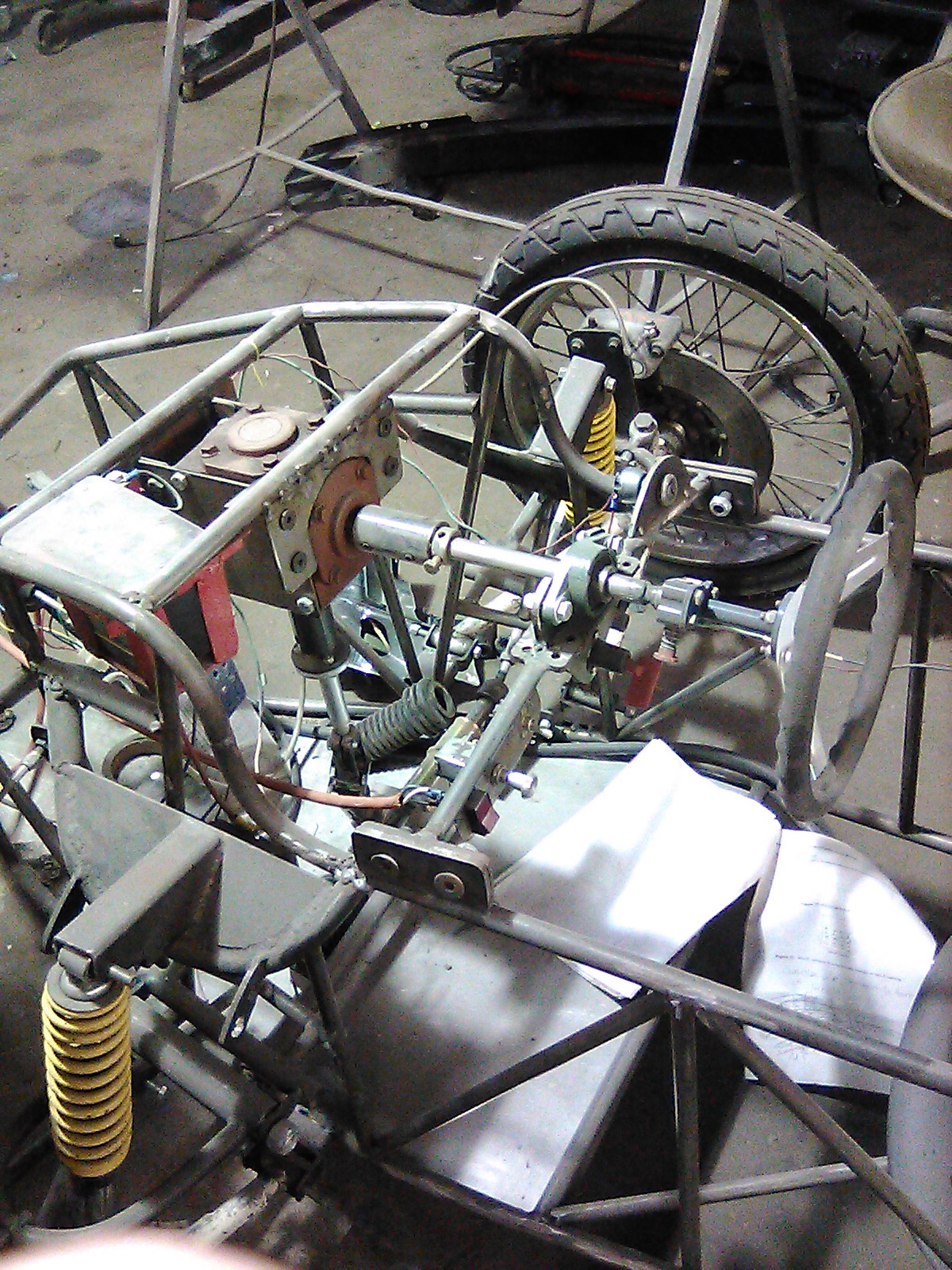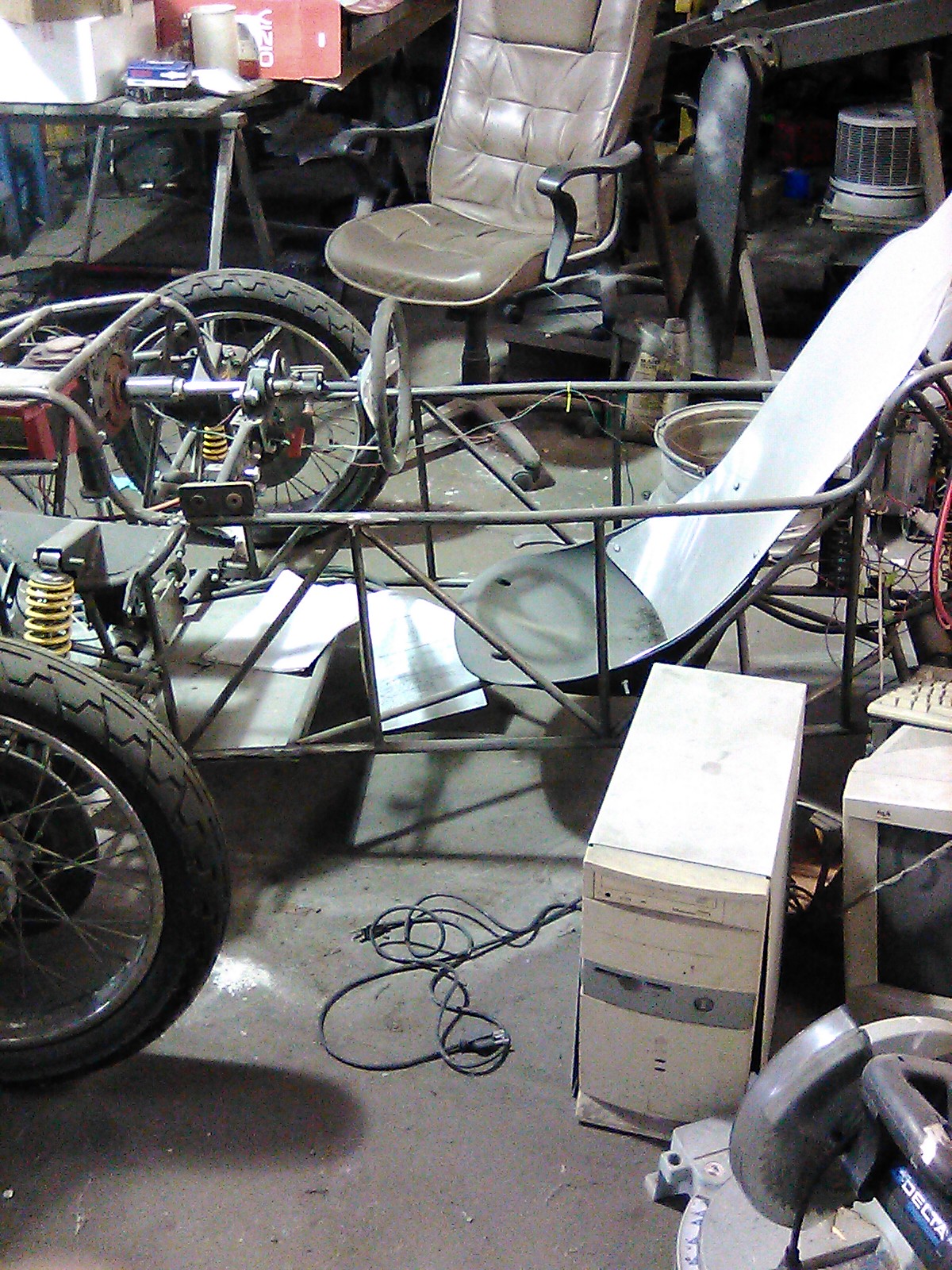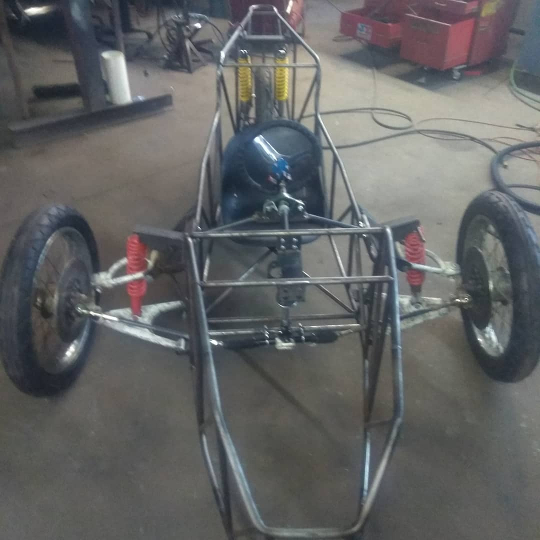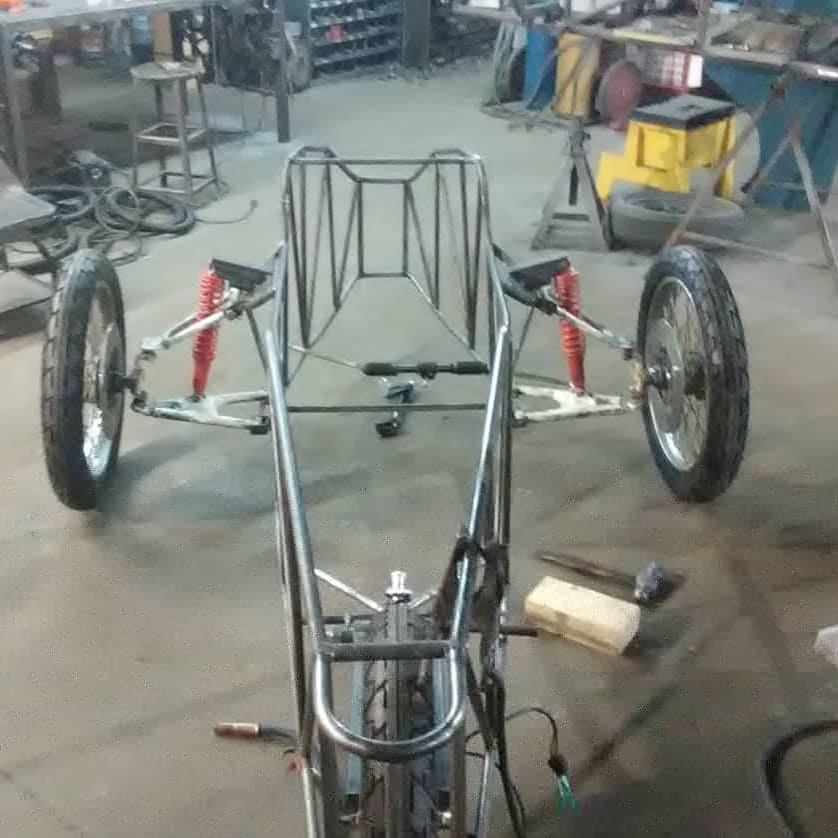Greeting EVers,
I do not have the budget for Formula E, and I am not convinced SCCA’s Prototype Electric class are the way to go- though full credit to Dayle Frame and the EVAC for their work on the difficult task of writing those rules.
Instead, I am involved in racing electric vehicles in Electrathon which is kind of the electric version of Karting but with more open engineering rules. The cost is a lot less than car racing, the track time is more, and there is a lot of wheel-to-wheel action. It is a fun and cheap way anyone can experiment with EV’s.
The driver is required to weigh or be ballasted to 180 pounds or over. Maximum battery weight/capacity is specified-15 lbs./1,000 Whrs if you are running lithium. Three or four wheels. Then there are some basic safety design rules for driver protection. And that is pretty much it.
Hub motors. All-wheel drive. Leaning suspension. Rear wheel steering. Whatever you want to try. The winning cars tend to keep it simple but do it well. Rear wheel drive Tadpole trikes (two wheels in front). Bicycle wheels. Reasonable camber. Here is a description of my vehicle: 2022-23 ProEV Super Coupe Description
We race on a variety of tracks including ovals and permanent road courses but most of the races are tight tracks set up in parking lots. This puts a premium on driver skill and keeps the cars close together.
I regularly pull 1.7 Gs cornering. Most courses the speeds are under 45 MPH. Here is a brief video of the ProEV Super Coupe in action. It is a 360 video.
I prep my own car. It is light enough to move around without help. Alignment, corner weights, mount two sets of tires, clean and lube chain, charge and balance pack, nut and bolt. That is pretty much all that is required for a race day. 4-6 hours work? Of course, making ‘improvements’ can use up more time.
I transport using a small open trailer and hitch it to my Prius. I drive up the night before the race and drive home at the end of race day. Entry fee is $40. I use a set of tires each race day so around another $45.
We race on a Saturday. The races are 1 hour long. Normal schedule is: 20 minute Practice, Race one, lunch break, 20 minute Practice, Race two, Trophies then head home.
There is a High School class and an Open Class. Those classes are subdivided into Lead Acid and Advanced Battery. All the classes run together.
Like most series, buying a used chassis is the way to go. The ‘want to buy’ section of this website is a good place to post: https://electrathonamerica.activeboard.com
A car can be built for as cheaply as $1,300 if you have some fabrication skills. Video here:
Other examples: 1HP Electric Car And here: https://www.electrathonamerica.org/jim-robinson-silver-bullet
There are a couple of new car builders out there as well. Blue Sky Design - aerocoupe kit and ElectrathonParts.com.
I am running in the Electrathon of Tampa Bay series. ELECTRATHON OF TAMPA BAY | ELECTRATHON RACING The season runs from September to May with about one race per month.
There are races in Georgia and Alabama Georgia Electrathon. Texas, Kansas, and Connecticut all have had races. There used to be an active group of racers in California and Oregon, but the pandemic disrupted their organization. There must be a number of fast vehicles sitting around in that area. This is what the racing looked like out there ten years ago at PIR:
and road racing at Hood River in 2016.
This race is around a brewery. I would happily commit to running in this race if someone restarts it!
The overall sanctioning body is here Home | AMERICA | The Official Electrathon America Site
I do not have the budget for Formula E, and I am not convinced SCCA’s Prototype Electric class are the way to go- though full credit to Dayle Frame and the EVAC for their work on the difficult task of writing those rules.
Instead, I am involved in racing electric vehicles in Electrathon which is kind of the electric version of Karting but with more open engineering rules. The cost is a lot less than car racing, the track time is more, and there is a lot of wheel-to-wheel action. It is a fun and cheap way anyone can experiment with EV’s.
The driver is required to weigh or be ballasted to 180 pounds or over. Maximum battery weight/capacity is specified-15 lbs./1,000 Whrs if you are running lithium. Three or four wheels. Then there are some basic safety design rules for driver protection. And that is pretty much it.
Hub motors. All-wheel drive. Leaning suspension. Rear wheel steering. Whatever you want to try. The winning cars tend to keep it simple but do it well. Rear wheel drive Tadpole trikes (two wheels in front). Bicycle wheels. Reasonable camber. Here is a description of my vehicle: 2022-23 ProEV Super Coupe Description
We race on a variety of tracks including ovals and permanent road courses but most of the races are tight tracks set up in parking lots. This puts a premium on driver skill and keeps the cars close together.
I regularly pull 1.7 Gs cornering. Most courses the speeds are under 45 MPH. Here is a brief video of the ProEV Super Coupe in action. It is a 360 video.
I prep my own car. It is light enough to move around without help. Alignment, corner weights, mount two sets of tires, clean and lube chain, charge and balance pack, nut and bolt. That is pretty much all that is required for a race day. 4-6 hours work? Of course, making ‘improvements’ can use up more time.
I transport using a small open trailer and hitch it to my Prius. I drive up the night before the race and drive home at the end of race day. Entry fee is $40. I use a set of tires each race day so around another $45.
We race on a Saturday. The races are 1 hour long. Normal schedule is: 20 minute Practice, Race one, lunch break, 20 minute Practice, Race two, Trophies then head home.
There is a High School class and an Open Class. Those classes are subdivided into Lead Acid and Advanced Battery. All the classes run together.
Like most series, buying a used chassis is the way to go. The ‘want to buy’ section of this website is a good place to post: https://electrathonamerica.activeboard.com
A car can be built for as cheaply as $1,300 if you have some fabrication skills. Video here:
There are a couple of new car builders out there as well. Blue Sky Design - aerocoupe kit and ElectrathonParts.com.
I am running in the Electrathon of Tampa Bay series. ELECTRATHON OF TAMPA BAY | ELECTRATHON RACING The season runs from September to May with about one race per month.
There are races in Georgia and Alabama Georgia Electrathon. Texas, Kansas, and Connecticut all have had races. There used to be an active group of racers in California and Oregon, but the pandemic disrupted their organization. There must be a number of fast vehicles sitting around in that area. This is what the racing looked like out there ten years ago at PIR:
The overall sanctioning body is here Home | AMERICA | The Official Electrathon America Site





